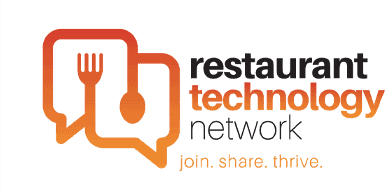Because of their massive size, multiple vendors, high customer traffic, and communal tables, food halls would seem to be poor candidates for successful reopening until the COVID-19 situation is well in hand.
It turns out, however, that in some ways the multi-venue food hall model has proven surprisingly resilient as we move through COVID and into the post-pandemic world.
In fact, it’s precisely because of their sizable footprints that, with a fair amount of creativity, food halls are often proving to actually be easier to adapt to the needs of social distancing than their smaller counterparts in the restaurant industry.
Here are 3 ways that food halls are making the changes necessary to survive in the new normal.
Sanitation
First and foremost, one of the biggest immediate adjustments has been a significant ramp up of sanitation, food safety, and employee hygiene procedures.
Food halls, like all dining establishments, are following a lengthy list of guidelines to minimize the chances of virus survival on surfaces, staff, and essential food service items. Important action items include:
- A focus on high-contact areas touched by both employees and guests, in addition to seldom-touched surfaces.
- Following sanitizing material guidance to ensure it’s at effective sanitizing strength, and to protect surfaces.
- Cleaning and sanitizing table condiments, digital-ordering devices, check presenters, self-service areas, tabletops, and common-touch areas.
- Avoiding all food contact surfaces when using disinfectants.
- Removing lemons and unwrapped straws from self-service drink stations.
- Implementing procedures to increase how often surfaces are cleaned and sanitized in the back-of-house.
- Checking restrooms regularly, and cleaning and sanitizing them based on frequency of use.
- Making hand sanitizer readily available to guests. Implementing touchless hand sanitizing solutions.
- Vigilant screening and quarantining of workers if they should test positive.
And in some cases, UV light and advanced filtration systems also work together to enhance overall sanitation.
Social Distancing
With plenty of room to work with, the task of distancing in food halls is not so much a matter of finding the space as it is repurposing the space that’s already there.
It’s true that, in the pre-COVID world, food halls were places of high volume, snaking queue lines, and communal tables. But with the removal of some vendors and increased spacing between the others (along with reduced capacities), distancing can be more easily accomplished.
In addition floors should be marked with appropriately distanced arrows or other indicators.
Large, clear signage can add to the experience by effectively communicating distancing and sanitation guidelines. This not only helps ensure those guidelines are followed, but also assures guests that the food hall is taking all necessary measures to ensure their safety.
Contactless tech
Contactless technologies are helping to eliminate as many contact points as possible so that menus can be perused, food can be ordered, and payments can be made with virtually no physical items being exchanged.
Footfall counters can even keep track of guests’ entry and exit, sending alerts directly to the general manager’s smartphone when maximum capacity nears.
Solutions like OneDine’s turn hand-held menus into contactless menus, and eliminate the passing of credit cards, receipt holders, pens, etc. by turning each table into a touch-free ordering and payment zone. Initial setup is easy, and data-driven insights help make operations more efficient and service more personalized as well as contact-free—all with no guest app required.
Not only is unnecessary contact eliminated and service streamlined, but guests can also receive customized recommendations by inputting their dietary preferences, favorite cuisines, dishes, spice levels, and more.
OneDine’s multi-venue ordering can also be harnessed to expand easy ordering and payment to multiple venues in one central location, so that all vendors can benefit from one, shared solution.
Ideal not only for food halls, but also for malls and airports, multi-venue ordering gives guests one central place to order instead of juggling separate apps for each restaurant. Guests simply order from the venue(s) of their choice, and payments are conveniently handled from within the same interface. If you want, you can even let guests pay for orders from multiple venues with just one convenient transaction.
Food halls might have seemed like an unlikely candidate for successful post-COVID reopening, but if there’s one thing we’ve learned over the past few months, it’s this: When everything that worked before suddenly doesn’t, creative minds get to work to find better options. And embracing a contactless dining experience is just one great example of that.





